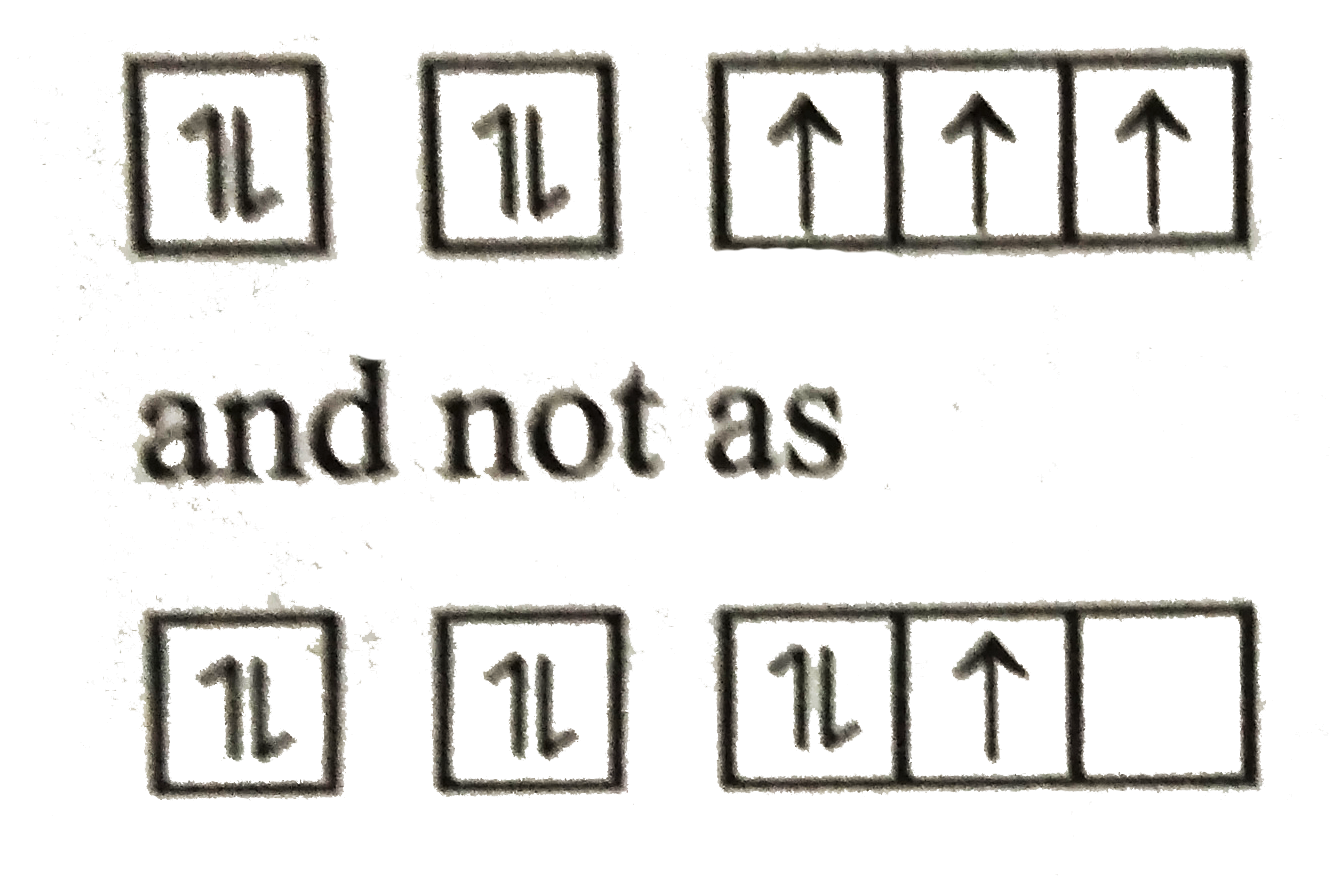Assertion (A) : The configuration of B atom cannot be 1s22s3
Reason (R ) : Hund's rule demands that the configuration should display maximum multiplicity
If both (A) and (R ) correct and (R ) is the correct explanation for (A)
If both (A) and (R ) correct and (R ) is the correct explanation for (A)
If (A) is correct but (R ) is incorrect
If (A) is incorrect but (R ) is correct
The correct Answer is:D
To solve the question, we need to analyze both the assertion (A) and the reason (R) provided.
Step 1: Analyze the Assertion (A)
The assertion states that the configuration of a Boron (B) atom cannot be 1s22s3.
- Understanding Boron: Boron has an atomic number of 5, which means it has 5 electrons.
- Correct Electron Configuration: The correct electron configuration for Boron is 1s22s22p1. This means:
- The 1s subshell can hold 2 electrons (which it does).
- The 2s subshell can also hold 2 electrons (which it does).
- The 2p subshell can hold 6 electrons, but for Boron, it only has 1 electron in this subshell.
Thus, the configuration 1s22s3 is incorrect because the 2s subshell can only hold a maximum of 2 electrons.
Step 2: Analyze the Reason (R)
The reason states that Hund's rule demands that the configuration should display maximum multiplicity.
- Understanding Hund's Rule: Hund's rule states that electrons will fill degenerate orbitals (orbitals of the same energy) singly first before pairing up. This maximizes the total spin, leading to maximum multiplicity.
- Applicability to Boron: While Hund's rule is relevant for filling orbitals, it does not directly explain why the assertion about the incorrect configuration is true. The assertion is primarily incorrect due to the Pauli exclusion principle, which states that no two electrons can have the same set of quantum numbers in an atom.
Conclusion
- Assertion (A) is true: The configuration 1s22s3 is indeed incorrect for Boron.
- Reason (R) is true: Hund's rule does state that configurations should maximize multiplicity.
- However, R is not the correct explanation for A because the reason for the incorrectness of the assertion is due to the Pauli exclusion principle, not Hund's rule.
Final Answer
Both A and R are correct, but R is not the correct explanation for A.
---
The assertion states that the configuration of a Boron (B) atom cannot be 1s22s3.
- Correct Electron Configuration: The correct electron configuration for Boron is 1s22s22p1. This means:
- The 1s subshell can hold 2 electrons (which it does).
- The 2s subshell can also hold 2 electrons (which it does).
- The 2p subshell can hold 6 electrons, but for Boron, it only has 1 electron in this subshell.
Thus, the configuration 1s22s3 is incorrect because the 2s subshell can only hold a maximum of 2 electrons.
The reason states that Hund's rule demands that the configuration should display maximum multiplicity.
- Applicability to Boron: While Hund's rule is relevant for filling orbitals, it does not directly explain why the assertion about the incorrect configuration is true. The assertion is primarily incorrect due to the Pauli exclusion principle, which states that no two electrons can have the same set of quantum numbers in an atom.
- Assertion (A) is true: The configuration 1s22s3 is indeed incorrect for Boron.
- Reason (R) is true: Hund's rule does state that configurations should maximize multiplicity.
- However, R is not the correct explanation for A because the reason for the incorrectness of the assertion is due to the Pauli exclusion principle, not Hund's rule.
Both A and R are correct, but R is not the correct explanation for A.
Topper's Solved these Questions
- ATOMIC STRUCTUREBOOK - CENGAGE CHEMISTRY ENGLISHCHAPTER - ATOMIC STRUCTUREEXERCISE - Exercises Integer
11 Videos
- ATOMIC STRUCTUREBOOK - CENGAGE CHEMISTRY ENGLISHCHAPTER - ATOMIC STRUCTUREEXERCISE - Exercises Fill In The Balnks
56 Videos
- ATOMIC STRUCTUREBOOK - CENGAGE CHEMISTRY ENGLISHCHAPTER - ATOMIC STRUCTUREEXERCISE - Exercises Single Correct
127 Videos
- APPENDIX - INORGANIC VOLUME 1BOOK - CENGAGE CHEMISTRY ENGLISHCHAPTER - APPENDIX - INORGANIC VOLUME 1EXERCISE - chapter-7 Single correct answer
1 Videos
- CHEMICAL BONDING AND MOLECULAR STRUCTUREBOOK - CENGAGE CHEMISTRY ENGLISHCHAPTER - CHEMICAL BONDING AND MOLECULAR STRUCTUREEXERCISE - Archives Subjective
15 Videos
Similar Questions
Statement-I : The configuration of B atom cannot be 1s22s3.
Because
Statement-II : Hund's rule demands that the configuration should display maximum multiplicity.
View SolutionAssertion (A) : The electronic configuration of nitrogen atom is represented as

Reason (R ) : The electronic configuration of the ground state of an atom is the one which has the greatest multiplicity
View Solution
Knowledge Check
Which of the following configurations does not follow Hund's rule of maximum multiplicity?
A1s22s22p63s23p2B1s22s22p63s23p64s23d6C1s22s22p63s23p64s13d5D1s22s22p63s23p44s2
Assertion (A) : The electronic configuration of nitrogen atom is represented as

Reason (R ) : The electronic configuration of the ground state of an atom is the one which has the greatest multiplicity
View SolutionThe configuration is 1s22s22p5 3s1 shows :
View SolutionAn element A has the configuration 1s22s22p63s1and the element B has the configuration 1s22s22p4 Give the formula of the compound formed.
View SolutionThe electronic configuration of valence shell of Cu is 3d104s1 and not 3d94s2. How is this configuration explained?
View SolutionFor the configuration 1s22s1, the quantum numbers for the outermost electron are
View SolutionAn element A has the configuration 1s22s22p63s1and the element B has the configuration 1s22s22p4 Give the formula of the compound formed. A has configuration 1s22s22p63s1 while the configuration of B is 1s22s22p5. What type of bond is likely to be formed between them ?
View SolutionThe electronic configuration of metal M is 1s22s22p63s1. The formula of its oxide will be :
View Solution
